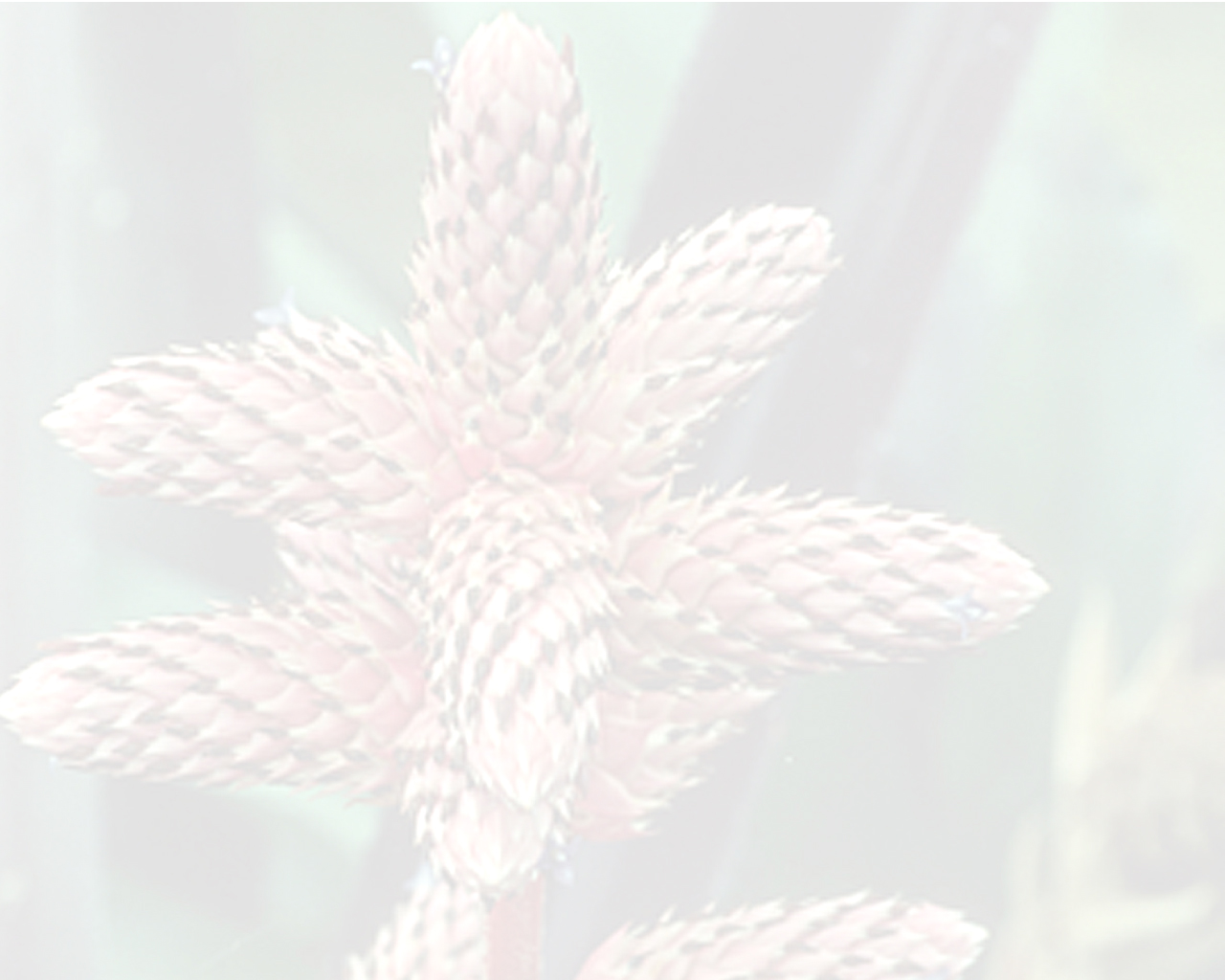


leaves about 1 m long, rigidly coriaceous, concolorous; sheath narrowly ovate, scarcely distinct, densely and finely brown-lepidote above, pale-lepidote beneath; blade 10–12 cm wide, glabrous above, densely punctulate-lepidote below, rounded with a stout horny black persistent or sometimes aborting mucro, remotely serrulate, the teeth 2 mm long, brown, decreasing in size toward the apex. inflorescence: peduncle erect, slender, probably much concealed by the leaves, densely white-farinose at first, becoming glabrous; peduncle bracts narrowly lanceolate, attenuate, much longer than the internodes, chartaceous, stramineous, the upper spreading or reflexed; fertile part many flowered, probably shorter than the leaves, very dense, slenderly ellipsoid or subcylindric, once-branched; axis white-tomentose; primary bracts like the peduncle-bracts, exceeding all but the uppermost spikes; spikes ellipsoid, many-flowered, glabrous, 18–22 mm long, sessile or the lowest with extremely short stalks; floral bracts ovate, 15 mm long, terminating in a slender pungent mucro as long as the base, stramineous, the base shorter than the sepals and the mucro equaling or exceeding them. flowers: sepals strongly asymmetric, coriaceous, 7.5 mm long including the mucro which is as long as the base, free, ecarinate; petals linear-lanceolate, 13 mm long, 2.5 mm wide, mucronate, green, each bearing 2 infundibuliform scales with lacerate margins about one third up from the base. stamens: anther mucronate; pollen ellipsoid, biporate; ovules obtuse, borne at the top of the cell; berry scarcely enlarged from the ovary. fruits: seeds brown, clavate, longitudinally striate.Edited from (29-03-2017): Smith & Downs 1979. Bromelioideae (Bromeliaceae) in Flora Neotropica.